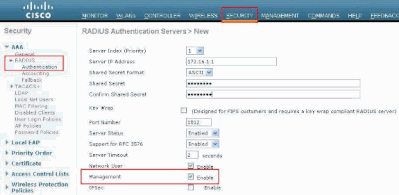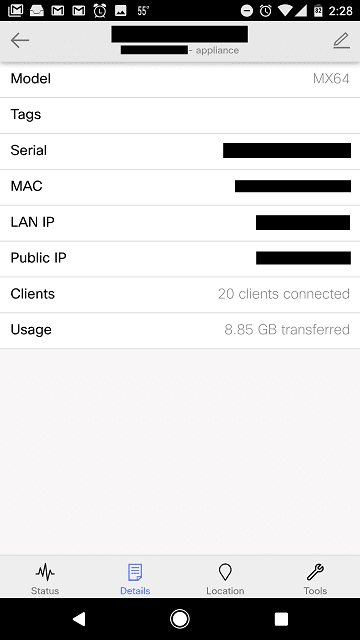

- #MERAKI VPN CLIENT CONFIGURATION WITH RADIUS FULL#
- #MERAKI VPN CLIENT CONFIGURATION WITH RADIUS PASSWORD#
On the Group Policy tab, click Default Domain Policy, and then click Edit. In the console tree, double-click Active Directory Users and Computers, right-click the domain name, and then click Properties. Open Active Directory Users and Computers. Again, note that reversibly encrypted passwords are saved during the change-password procedure, so existing users must change their passwords to use CHAP.Įnabling reversibly encrypted passwords (CHAP) in a domain (Active Directory server) Group Policy By using the Directory Services snap-in, you can select this feature through the properties of an individual user. #MERAKI VPN CLIENT CONFIGURATION WITH RADIUS PASSWORD#
For a Windows 2000-based remote access server that is a member of a domain, you can select the Store password using reversible encryption for all users in the domain option on the domain server as described below.Īlternatively, you can enable reversible storage of passwords for individual users. NOTE: Reversibly encrypted passwords are saved during the change-password process, so existing users must change their passwords to use CHAP. If you have other groups on the AD that needs different access, you can add more Remote authentication policies. TIP: This completes the IAS configuration. Click Next on the Policy Window and then click Finish to complete.The following message box appears, Click No on the help message box.Under the Authentication tab select MS-CHAP-V2, MS-CHAP and PAP as authentication method.The Edit Dial-in Profile window will appear.On the Profile window click on the Edit Profile button.Select the Grant remote access permission radio button under the option If a connection request matches the specified conditions.Back on the New Remote Access Policy window, click Next.
#MERAKI VPN CLIENT CONFIGURATION WITH RADIUS FULL#
Click Add, then enter the Windows User Group " Full Access". By selecting Windows Groups, you can authenticate a user who is a member of a User Group in the Windows AD. From this list, select Windows Groups, and click OK. Click Add on the Policy Conditions window. Select Set up a custom policy radio button and then enter a name for this policy. To setup the access criteria for users, right click on the Remote Access Policies and select New Remote Access Policy. This shared secret is needed later on the SonicWall security appliance, so note this for future reference. Select RADIUS Standard, (also the default option), enter a Shared Secret. Enter a name for the new RADIUS client and enter the LAN IP Address of the SonicWall. Right click the RADIUS Clients folder in the left pane and select New RADIUS Client from the menu. Launch the IAS Console by clicking on Start | All Program | Administrative Tools | Internet Authentication Service. Select the Dial-in tab and enable the Allow access option under Remote Access Permission.Ĭonfiguring the IAS Server to Support RADIUS Clients. Create a user and add the user as a member of the new User Group. Open Active Directory Users and Computers and create a user group in the Users folder. The below resolution is for customers using SonicOS 6.5 firmware.Ĭreating User Groups and configuring User Management for RADIUS Authentication in Active Directory This release includes significant user interface changes and many new features that are different from the SonicOS 6.2 and earlier firmware. This article assumes that L2TP settings have been configured in the SonicWall and describes only the configuration needed for L2TP authentication. The solution is to configure the new feature RADIUS may also be required for CHAP to automatically divert CHAP/MSCHAP authentications to RADIUS. This article illustrates a scenario wherein the primary authentication in the SonicWall has been set to LDAP but since LDAP does not usually support CHAP/MSCHAP authentication, L2TP VPN clients and other CHAP/MSCHAP authentication cannot be authenticated by their AD user credentials. Copy URL The link has been copied to clipboard. Content Filtering Client Control access to unwanted and unsecure web content. Capture Client Stop advanced threats and rollback the damage caused by malware. Cloud Firewall (NS v) Next-generation firewall capabilities in the cloud. Cloud App Security Visibility and security for Cloud Apps. Email Security Protect against today’s advanced email threats. Switches High-speed network switching for business connectivity. 
Wireless Access Points Easy to manage, fast and secure Wi-FI.Secure Mobile Access Remote, best-in-class, secure access.Cloud Edge Secure Access Deploy Zero-Trust Security in minutes.Capture Security appliance Advanced Threat Protection for modern threat landscape.Capture ATP Multi-engine advanced threat detection.Network Security Manager Modern Security Management for today’s security landscape.Security Services Comprehensive security for your network security solution.Next Generation Firewall Next-generation firewall for SMB, Enterprise, and Government.






 0 kommentar(er)
0 kommentar(er)
